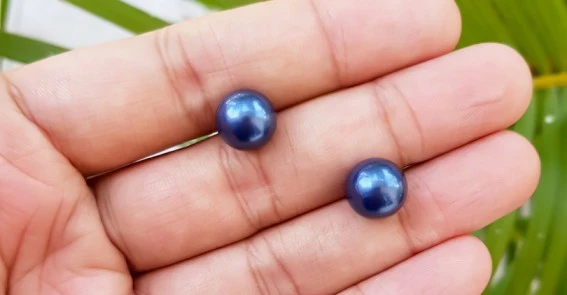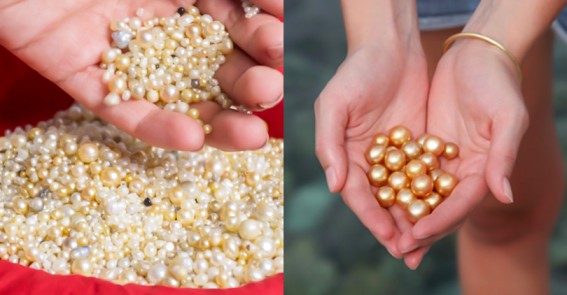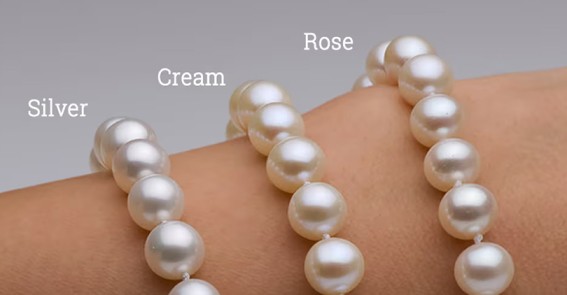How Do Oysters Make Colored Pearls?

Know more about the How Do Oysters Make Colored Pearls. Though pearls are discovered within a living entity, an oyster, most jewelry is fashioned out of precious metals and jewels unearthed from the ground. A biological process produces pearls; the oyster uses them to defend itself against alien chemicals.
How Do Oysters Make Colored Pearls: The Journey of a Pearl: From Oyster to Jewelry

Where Do Black Pearls Come From?
A pearl can acquire a specific color for a variety of reasons. Like most things connected to Mother Nature, truth be told, it's primarily about luck. Here are some guidelines, nevertheless, based on experience:
Generally speaking, black-lipped oysters create black pearls; hardly ever white ones
Other varieties of oysters seldom produce black pearls.
Apart from these broad guidelines, one cannot be sure what hue pearl a farmer raised would turn out. Mostly it's about chance and luck.
Read Also: Wide Leg Pants - How To Style Wide Leg Pants?
How might oysters produce various color pearls?
What Affects the Pearl's Colour?
A pearl's color is mostly derived from three elements:
Sort of oyster
Number of nacre layers
Layers' thickness in nacre form
Nacre: what is it?
The clear, crystal-like material known as nacre causes a pearl's iridescence. Often known as Mother-of- Pearl, oysters secret this natural material in layers. Many layers develop over time until finally a pearl results.
The nacre will be thicker at the end the more layers of nacre one adds. The gem gets more deep in color the thicker the nacre is. The color of the pearl will have milky-looking gem with extremely few overtones when the nacre is thin. The iridescence of the gemstone results from the overlaying many nacre layers.
But what effect does nacre have on pearl color? And how may oysters produce varying color pearls?
From where does pearls get their colors?
Many times, the color of a pearl affects the color of the oyster's lip—that is, the outside section of its shell. For instance, grey tints from cultured Tahitian black-lipped oysters, sometimes known as Pinctada margaritifera, pass on to cultivated Tahitian pearls.
See the grayish to silvery tones on the edge of the black-lipped oyster shell (below).
Try to guess what else drives oysters to produce varying hue pearls. Conchiolin is an organic material that naturally binds or glues the layers of crystalline aragonite together. Microscopic pigments found within the conchiolin layer allow pearls to inherit their colors. Sealing all of these platelets together falls to conchiolin.
What hue under those layers of nacre is that?
Among many other wonderful aspects, these gemstones fool the eyes into seeing colors that might not be real.
Look at this:
When the conchiolin of a pearl exhibits brown, grey, black or another hue...
From the surface of the pearl, the color will appear to the eyes via the thin layers of crystalline as grey, blue, bronze, green, orange, pink and black.
How might oysters produce pearls of many overtones?
Comprising the beautiful layers of pearls, aragonite platelets are extremely thin, semi-transparent crystals. White light penetration of the pearl surface causes the beam of light to deflect back toward the observer. This lets you view the several pearl colors: orange, red, green, yellow, How Do Oysters Make Colored Pearls?
The pearl overtone is much influenced by this fantastic phenomena. On the outward body color of the gem, this is the iridescent, subdued hues seen with the unaided eye.
Does the color of a pearl influence its cost?

The pricing of a pearl might or could not depend on its color. Still, the pearls are more valuable on the market the more homogeneous their hue is.
Natural black pearls were quite scarce in the past, which made them rather valuable and costly. However, thanks to the sophisticated Tahitian pearl market of today, they are not as rare as they once were when deep-sea diving was the exclusive method to get actual pearls.
FAQs: How Do Oysters Make Colored Pearls?
Do oysters naturally make colored pearls?
Though many people think colorful pearls are created primarily with human influence, the truth is far more fascinating. Those incredible marine life, oysters may indeed produce them on their own in breathtaking colors all along.
Can pearls naturally be different colors?
But did you know pearls are not just white? Actually, one of the most remarkable features of the pearls are their absolutely beautiful natural colors. There are so many tones in between white, cream, pink, yellow, green, blue to black.
